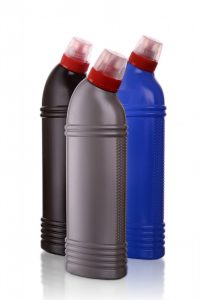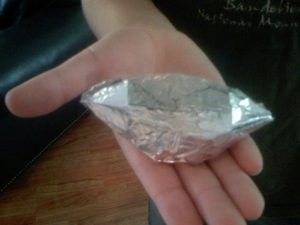
Låt ett barn i taget blunda, och skaka behållaren i närheten av ena örat, andra örat, eller vid nacken på barnet. Be barnet berätta varifrån Ljudet kom!
Det är viktigt att resten av barngruppen är så tysta de kan när det här experimentet utförs, annars blir det svårt att höra Ljudet!
MATERIAL
- En maracas eller en av behållarna från ”Ljudmemory”.
Låter ljud överallt?
Ljud leds olika bra i olika material. Att ljud hörs även under vatten, det lär man sig när man vågar ha öronen under vattenytan, men det fenomenet går att upptäcka även genom en behållare av plast.
Be barnen (ett i taget) att sätta ena örat mot träföremålet, och hålla för det andra örat. Slå lätt med pennan mot trä- föremålet. Hörs det? Fortsätt med de andra materialen.
De barn som vågar, kan sänka öronen under vattenytan i bassängen om ni badar, så knackar du med pennan mot bassängkanten.
MATERIAL
- Något av trä, t.ex. en planka, ett bord eller en fönsterbräda.
- Något av metall, t.ex., ett ugnsgaller.
- En stor behållare med vatten i (ljudet kommer att ledas även i behållaren).
- En penna



 Your challenge is to build a boat that can hold the most small coins before it sinks.
Your challenge is to build a boat that can hold the most small coins before it sinks. The Swedish National Agency for Education (
The Swedish National Agency for Education (